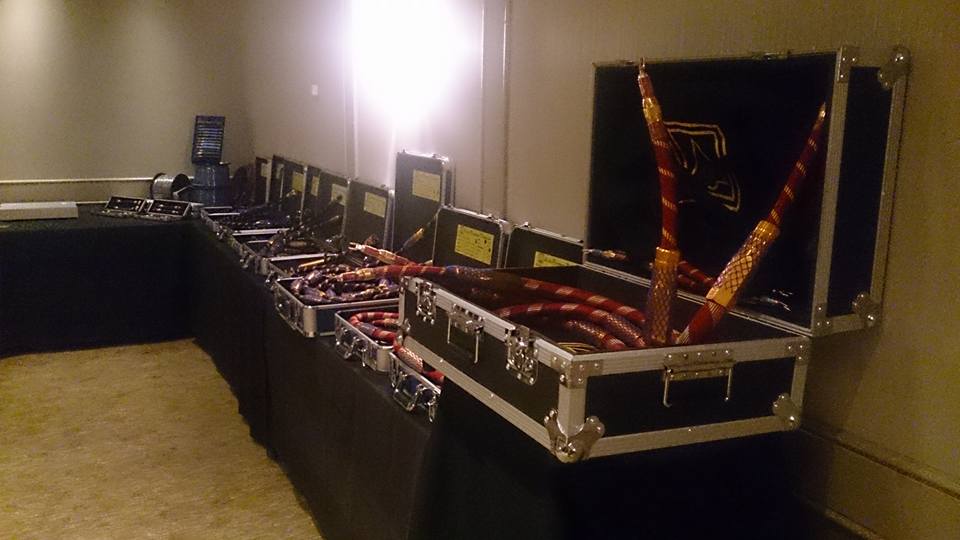
-
-
-

此篇文章於 2015-08-19 06:04 AM 被 kl2tw 編輯。
-
-

Enjoy the music.com Steven R. Rochlin在加州音響展參觀A.R.T.展房
他認為此次A.R.T.展房的聲音非常優秀,由A.R.T.線材、調音道具、Pass Lab和Tannoy喇叭組成,是此次2015加州音響展整體最佳聲音展房。乾淨、快速、聚焦、優異的透明性。他在世界各地聽過很多次Tannoy喇叭,這次可能是他聽過最好的一次。這證明了發燒友很難聽到器材的全部潛力,因為有太多潛在的變數,例如系統的組合、空間的整合、室內聲學、整體使用的線材。
無論是什麼原因,A.R.T的展房無疑是這次他認為最好聲的,甚至在過去不曾體驗Tannoy落地喇叭有這樣的表現過。
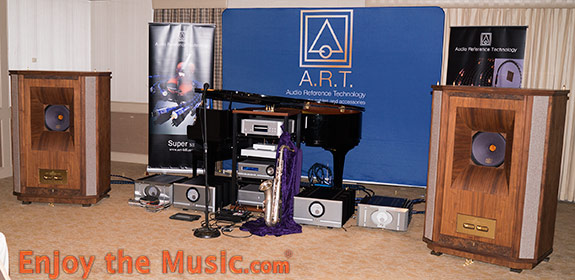
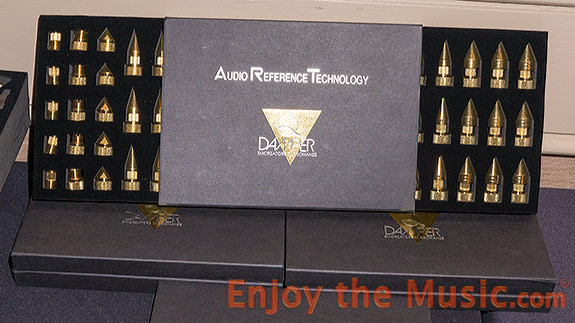
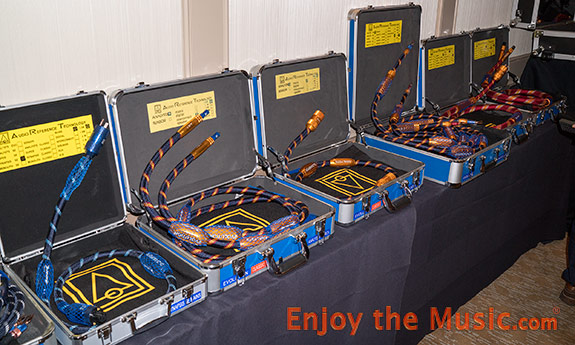
報導來源: http://www.enjoythemusic.com/Califor...noy_Pass_Labs/
-
-

A.R.T. Super SE cable system Review
Print Article
By: Ed Momkus | March 2015

Audio Reference Technologies Super SE cable system
In the last few months I’ve reviewed the Pass Labs XS300 monoblocks, the Tannoy Canterbury GR speakers, and the Bricasti M1 Stereo DAC (review to come). In some cases these different components’ reviews overlapped one another, and for a short time all three were used together. The constants during all these reviews, however, were the various cables that connected and powered them, and include in that group of cables were the Audio Reference Technology (A.R.T.) Super SE cables.
Comparison Cables
I am lucky to have two reference interconnects that I could use for comparison, as well as several excellent step-down ICs. The reference ICs were the Tara Labs Zero Gold (MSRP $16,000) and the Silent Source Music Reference (MSRP $7,600), both of which are, in my opinion, at or near the pinnacle of interconnects. I also have the Silent Source Silver Signatures (MSRP $1,800) and the Lessloss Tunnelbridge System ICs (MSRP $2,500, plus $2,600 for the special power supply), both of which are very good cables, and much less expensive that the Zero Gold and the Music Reference. The A.R.T. Super SE (MSRP $5,650) comes in at the same price point as the Tunnelbridge, though the Tunnelbridge’s power supply unit handles up to 4 interconnect pairs.
My speaker cables are two separate pairs of the Silent Source Silver Signatures (can’t recall the exact MSRP for the silver signatures, which don’t appear to made anymore, but estimate $2,500 per pair) for biamping, used together with two sets of Walker Audio Eliminators (MSRP $450 each) and multiple Z-Sleeves (MSRP $200-400, depending on configuration). The A.R.T. Super SE speaker cables don’t fit into the Z-sleeves, so I could not compare them to the Silver Signatures with the Z-Sleeves. The A.R.T. Super SEs come in at an MSRP of $9,750.
My own power cords are Isoclean Super Focus and Lessloss DFPC Signatures. Both of these are excellent power cords, very clean and extended, with good body. Both are also in the middle/upper middle of their manufacturers’ range of offerings. From a pricing standpoint we are comparing PCs that have MSRPs of $3,000 (A.R.T. Super SE), $1,150 (Lessloss DFPC Signature) and $2,100 (Isoclean Super Focus).
Listening and Comparisons
Super SE Interconnects. The Zero Gold was consistently at the top of the heap when comparing individual characteristics, as well as in overall presentation. This is as it should be, given that the Zero Golds list for more than twice as much as the next most expensive competitor. However, I was struck by how good all of the ICs sounded overall. Just to get a reality check, I went down to my storage area and pulled out several of my old cables from the early days of upgrade fever – ICs in the $75-250 range. Substituting these for any of my high end cables immediately confirmed that there is indeed a reason why we sometimes spend insane money for a cable.


So how did the Audio Reference Technology Super SE compare in specific ways? Let’s start with pace, rhythm and timing (PRAT). In this respect Silence Source interconnects are my reference, being among the 2 or 3 most lively interconnects I’ve ever heard. As expected, once my comparisons began, the Silent Source interconnects, both the Music Reference and the Silver Signatures, conveyed the best sense of speed and PRAT, with the Zero Gold the slightest bit “slower”. The Super SE was in turn slightly “slower” than the Zero Gold, but provided a much fuller bass with greater body and bloom than the Silent Source Silver Signature. The difference was not huge, but nonetheless obvious with careful listening. Now I want to be clear here: these are all excellent interconnects, and if you weren’t running head-to-head comparisons you might not even notice the difference. The Super SE has very good PRAT and you will be tapping your toes on lively music.
Moving on to bass reproduction (which is often closely tied to PRAT because it affects the perceived “speed” of the music), the Tunnelbridge was my preferred cable by a hair. However, all three of the Super SE, Zero Gold and Music Reference were so good at bass reproduction that this was clearly only personal preference and (possibly) system synergy.
In the all-important midrange the Super SE really shines, and I mean that almost literally. The most distinctive trait of the A.R.T. Super SE was a “sheen” that made voices and the midrange have an inner glow. I have a memory of a similar experience listening to a BAT preamp and amp many years ago. I thought that there was a quality to the music that made it seem as though it was illuminated from within. I know that’s a poor description, but I’m a bit at a loss to come up with something better. It did not feel as though something artificial was being added to the music. Rather, it felt as though some quality of the music that was always there was being revealed. Ok – I know that sounds like mumbo-jumbo, but it’s the best I can do.
Compared to the $16,000 Tara Labs Zero Gold XLR interconnect, the Super SE holds its own very well. It required attentive listening to identify the differences between the two cables. Though there is an slight loss of dimensionality, the chief difference between the Zero Gold and the Super SE was the Zero Gold’s ability to vividly portray nuances and tonal pallets. Otherwise, in terms of all of the other audiophile characteristics the two cables are remarkably close, despite the large price difference.
Super SE Power Cords. This was a very tough comparison for me. I only have one Isoclean Super Focus. On the other hand, I had two A.R.T. Super SE Power Cords, and it is clear that use of multiple Super SE’s is very synergistic. (In fact, using all the Super SE’s – interconnects, power cords JD speaker cables – together was very synergistic. More on this later.) As a result, I could only compare a single Super Se with a single Super Focus. Since I run monoblock amps, this would not lend itself to comparison. Consequently, I alternately used the Super SE and the Isoclean Super Focus on my DAC and then on my preamp. In both cases I had a distinct preference for the Isoclean. Super Focus, which created a smoother tonal palette without loss of any dynamics. The Super SE had more body, and though the Super Focus initially seemed more “neutral”, closer listening led me to the conclusion that it sounded a tad sterile compared to the A.R.T. Super SE.

The comparison with the Lessloss DFPC was also complicated. The Lessloss power cords’ effects are maximized when they are used with the Lessloss Firewall power conditioners, so using other manufacturers’ power cords with the Firewalls can create some questionable comparisons. Consequently, the reader must take into account that the results may be biased because the Lessloss Firewalls were in each test system. In this comparison I used both A.R.T. Super SE’s to feed either the Pass Labs XS 300 monoblocks, the Electrocompaniet Nada monoblocks, or the Electrocompaniet Nemo monoblocks. When used with the Pass amps the Super SE’s were powering the entire frequency range. When used with the Electrocompaniet amps the Super SE’s powered the either the Nada’s handling the midrange and treble, or the Nemo’s handling the bass range.
In my system the Lessloss DFPCs are neutral and produce a very clean but organic sound, without any sense of artificial softening, etching, tonal imbalance or any other characteristic that calls attention to them. I believe that the clean sound is due in no small part to the extremely low noise level that comes through these cables. The Super SE’s were also extremely quiet, though by employing a very different technology. The Super SE’s exhibited a bit more body and weight, but were also a bit slower, erring more on the side of weight than on the side of speed. In particular, I thought the Super SE worked better with the Nada, which is a slightly “faster” amp than the others. I preferred the Lessloss with the XS 300, and could not really choose between the two when they were used with the Nemo monoblocks. I have to emphasize that the differences were small, and I found it very difficult to express a preference, especially in light of the fact that the cords all ran from Lessloss Firewalls to their respective components. All I can say is that I’ve been an ardent admirer of the Lessloss PCs, and the Super SE is clearly a top power cord.
Super SE Speaker Cables. The interconnect comparisons were straightforward, but like the power cords, the speaker cable comparisons were complicated by various factors that made them more difficult to evaluate. Let me explain. Most of the time I biamp my speakers, and thus need to use 2 pairs of speaker cables. In addition, my Vivid Audio Giya G1 speakers’ terminals are recessed in and under the rear of each speaker and have a smallish opening for the speaker cables. This is no problem for my Silver Signatures, but can be a significant issue for stiffer speaker cables with larger diameters. That proved to be the case with the A.R.T. Super SE speaker cables. I simply could not fit both pairs of speaker cable through the Vivid’s opening (A.R.T. Sent me two pairs because I told them I am biamping), so I eliminated the most direct comparison of biamping with both the Super SE and the Silver Signature. I also could not use the Z-Sleeves with the Super SE, though this actually proved to be a great way to show how good the Super SE is at shielding against stray signals in the air.
I did most of my reference system listening with the Pass Labs XS 300 amps driving the Vivid G-1s. As a second reference point, I also installed the extra pair of Super SE cables in a secondary listening room that featured Sonus Faber Venere 3.0 speakers, Electrocompaniet Nada amps and Pass Labs XP-20 preamp.
The Super SE speaker cables clearly bested my Silver Signatures in direct head-to-head comparison. They had greater body and nuance and nearly equal speed and PRAT. Even when I added the Z-sleeves to the Silent Source the Super SE speaker cables demonstrated their superior shielding and produced an extremely clean but full-bodied sound. When I added the Walker Audio Eliminators to the mix when using the Silver Signatures the sound became much closer, but I still preferred the A.R.T. Super SE’s.
When I used the Super SE cables in my secondary listening room that featured Sonus Faber Venere 3.0 speakers, Electrocompaniet Nada amps and Pass Labs XP-20 preamp I was comparing the Super SE’s to an old $500 bi wire cable from Audioquest. I expected an improvement, but I was totally surprised at the extent of the improvement. Absolutely everything improved in a really obvious way – treble extension and smoothness, bass extension and control, midrange body and articulation as well as dimensionality and soundstaging. This was another good reality check because, after all, we’re dealing cables that are more expensive than most peoples’ complete stereo systems. It was comforting to prove that we’re not totally insane.
Synergistic Effects. It is important to describe how use of all of the A.R.T. Cables reinforced all of the strong points of each of the cables. In one configuration I used all of the A.R.T. cables (including the excellent jumper cables) except for one pair of speaker cables with the Electrocompaniet Nada monoblocks, so that the preamp sent its signal to the Nada’s via Super Se interconnects, the Super SE power cords powered each monoblocks and the Super SE speaker cables and jumpers drove the Vivid G-1s. Now I could hear the full extent of the SE’s ability to powerfully present the music with excellent body, power, speed and nuance. A.R.T. Emphasizes that use of their cables together has a synergy that has a cumulative effect. I can verify that that is true, in spades. If you can afford them, employing a complete complement of the SE’s will let you enjoy the SE’s qualities to the fullest.

Conclusion
The bottom line is that the Audio Reference Technologies cables are very, very good products in a highly competitive segment of the uber cable business. They had an excellent ability to deliver tight, yet meaty and nuanced bass. The highs were extended and never shrill (unless the music actually demanded it), and the midrange had a warm sheen that melded extremely well with each set of amps and speakers I used. It was totally impossible not to like what they did for the music. If you are choosing between very high end cables like these your ultimate decision will depend on your personal taste and the size of your pocketbook, but rest assured that you’ll be getting cables that are among the best available.
http://www.dagogo.com/r-t-super-se-cable-system-review
此篇文章於 2015-11-04 11:51 AM 被 Leo Yeh 編輯。
-
-

我覺得ART除了的線材很好之外,調音錐更算是獨門的產品。
調音錐如果能夠善加使用,效果除了可比 EQ,更能達到前後音場和聲音層次的提升。
-
The Following User Says Thank You to koei27 For This Useful Post:
-
 Audio Reference Technology 調音錐以及L.F.E低頻音效裝置評鑑 Audio Reference Technology 調音錐以及L.F.E低頻音效裝置評鑑
Audio Reference Technology 調音錐以及L.F.E低頻音效裝置評鑑
By: Jack Roberts | October 2015
翻譯:李紀恩 Chi-En Lee
Audio Reference Technology (A.R.T.) 公司是由 Luigi Basagni 在 1983 年於義大利佛羅倫斯創立的。根據 Basagni 的說法,由於聲音訊號的傳遞過程中存在著大量的外部干擾因素,該公司創立的主要目標就是找到一個能從音響系統中聽到「真實的聲音」的方法。A.R.T 並不是一個很大的公司,包含三名研發人員在內總共只有 12 個員工。在 2013 年 一次 Dagogo 的訪問中,身兼研發主任的 Luigi Basagni 提到:「我想, A.R.T 能夠歷經 25 個年頭仍然屹立不搖的原因在於…我們可以提高音響系統的性能來得到它本來就應該要有的,我稱之為『真實』的音質。 」「『讓聲音變得真實』是讓A.R.T 能夠蓬勃發展 25 年的關鍵。」
A.R.T 最有名的產品大概是他們的導線,不過,他們同時也生產其他產品,包括一整個系列的電源相關產品、一款 CD 墊、一款黑膠唱片夾鎮以及一些室內聲響校正配件 – 本文所評鑑的對象就是他們的室內聲響校正裝置。在前面提到的同一次訪問中,Basagni 有說到:「我們所設計的調音錐(Tuning Cone)其原理是根據在端點固定的振動下,空氣振幅的變率會跟著頻率做改變,因此我們所聽到的聲音也會跟著改變。使用調音錐可以改良整個音場,帶出更多低中高頻,同時增加動態。」我知道這些話聽起來很像誇張的官方宣傳,這也是為什麼我推託了一陣子不太願意做這份評鑑的其中一個原因 – 坦白講,我一開始是對這些產品充滿懷疑的。
直到某一天,Audio Reference Technology 的 David Huang 先生來到我的家中調校我的系統。當天他帶了他們公司的金屬製以及木製調音錐,並且還帶了一台低頻音效裝置(Low Frequency Effect unit)。當調校我的音響房間時,他一邊作業,一邊叨叨的念著要讓我的系統發出「真實的聲音」。我記得我上次好像也是從某個亞洲裔的音響發燒狂口中聽到這個詞。
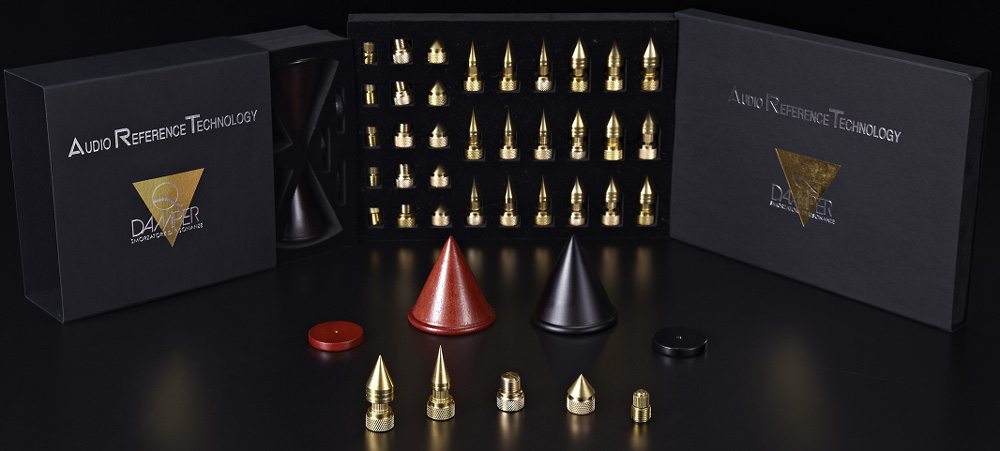
圖:ART 調音錐
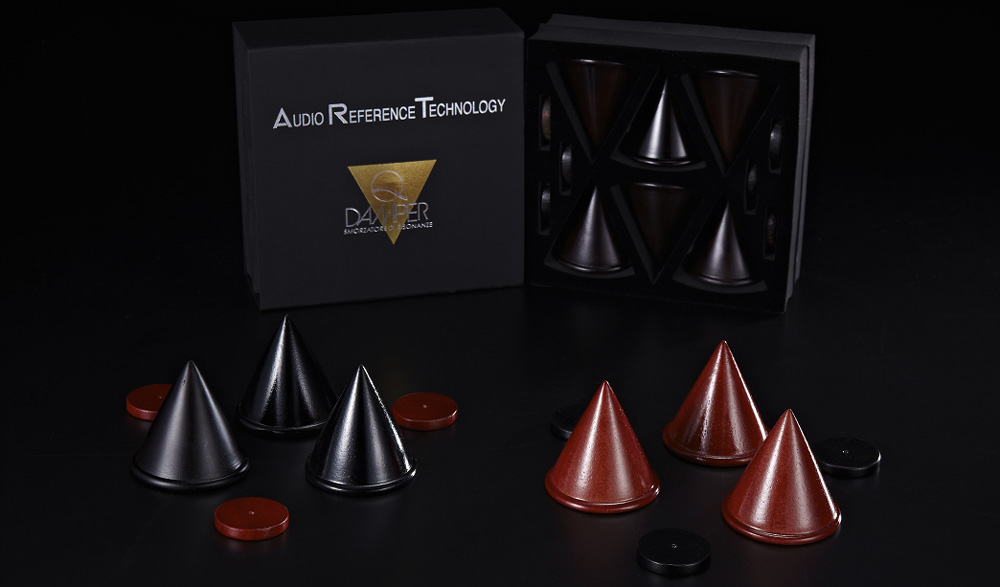
圖:ART 木錐
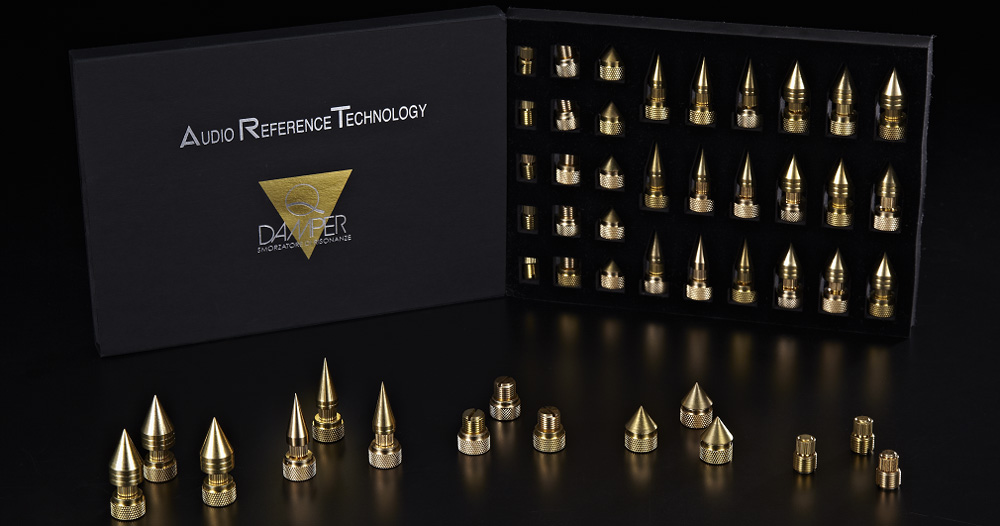
ART 金屬音錐
一開始的時候,黃先生詢問我在整體聲音上有沒有任何地方是我希望可以改進的。我告訴他說我希望可以在中低音以及低音的部分聽到更多的延展性,但不要犧牲任何 PRAT 值以及那充滿神奇活力的中頻。再次強調,當時的我並沒有很樂觀的覺得放幾個錐狀物在我的系統周圍就可以達到這個效果。
不過,黃先生對於不同調音錐以及其對於聲音和音場影響的瞭解程度著實讓我相當訝異。於是20分鐘之內,我就漸漸的從滿腹懷疑開始轉為覺得也許這真的有用。接下來,他開始問我更多問題:請問我是否有覺得越來越靠近我想要的聲音?低音有沒有改善?中音是否有變亮或變多變少?他甚至問我整個音場的高度和寬度是否有改變。每次我回答他之後,他就會再拿出一些不同的調音錐再做微調。大概一個半小時之後,他正式完成調整,而這時的我已經完全被說服了。可想而知,我立刻躍躍欲試想要自己來調看看,不過我還是忍著先保持原樣的聆聽了幾天之後才開始玩。別擔心,我可不是個傻瓜 – 所有黃先生的做的配置都被我好好的用相片記錄了下來。
這些金屬調音錐看起來好像只是一個個器材上的尖釘,但它們不是。這些金屬錐,以及其它兩個不同顏色,分別稱為「明」 錐 和「暗」 錐的木製調音錐,全部都經過調校並鎖定在特定的頻率上。在公司提供的使用說明中有列出不同大小的調音錐所相對應的頻率,使用者可以透過這份資料很精確的調整他們的系統。於是,兩天之後我開始自己移動並增加更多的調音錐。我發現當我加入太多木錐的時候,聲音的中音和上低音開始變得混濁。相反的,當我把所有的木錐都移除時,同樣的頻率範圍會變得比較薄。同樣的,中音以及高音部分也可以做很類似的改變。我發現這些東西相當有價值,因為它們能夠調整我的系統讓它播放出更接近「真正的音樂」。感覺上,它們好像可以在整個系統的聲音上增加泛音。當然,你可能會出現加太多矯枉過正的問題,不過,經過仔細的聆聽調整,現在我的系統播放的音樂聽起來比以往我所有聽過的都更真實。
長年以來,我都覺得把平衡以及音色控制從前極移除這件事是個錯誤。我絕不會考慮沒有平衡控制的前極,但同時我也已經放棄想要購入有音色控制的世界級 linestage 前極的想法。Audio Reference Technology 的調音錐是我目前用過最好的音色控制裝置。它們能做的事情比起老式的前極音色控制多得多,同時它們也比所有我用過的全頻等化器來得更好。它們讓你可以把泛音以及音樂表現度增加得恰到好處,同時不用犧牲掉系統的透明以及清晰度 – 這非常的重要。這些調音錐在我的系統裡越久,我越覺得它們對於整個音色在泛音上的優化程度非常顯著。現在弦樂器的豐富度以及質感都提升了,整體的聲音也變得更飽滿,充滿著美麗的音色。
除了調音錐以外,他們的低頻音效裝置也同樣的讓我非常印象深刻。長久以來我都希望我的 Teresonic Ingenium 揚聲器在低音的音域可以表現出它在中音域部分一樣的延展性,但是所有我試過的重低音揚聲器在搭配上 Teresonic Ingenium 之後在速度上都顯得不協調。然而,這台 A.R.T. 低頻音效裝置竟然能在沒有任何對於低音的負面效果之下完成上述目標,同時在音色上沒有喪失任何透明度。

圖:ART 低頻音效裝置 XLR
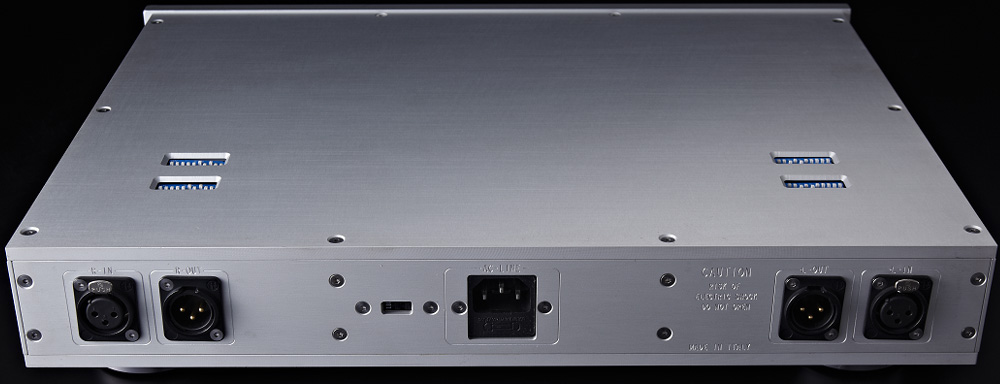
是的,這是一台主動式的裝置。雖然 A.R.T. 公司不希望把它叫做一台等化器,但我不知道除此之外它應該叫做什麼。在他們公司的網站上有這麼一段話:「如果考慮到頻寬以及音色品質,我們發現大多數的音響器材都沒有在其最佳條件下運作,這對於消費者而言是個很大的損失。即使某些高級的音響系統在低頻部分可以下探 20 Hz,但回音、音波波長或者後極放大器無法自控低音等原因都會造成我們無法好好的聽到真正的低音。A.R.T. 的低頻音效裝置就是專門設計來解決上述這些問題的。透過這台裝置,你不只會聽得到非常棒的低音,同時令人訝異的是整個頻譜都會聽起來更開闊和寬廣。中音部將變得純淨圓潤,低音部將變得深刻清晰,整個音域的立體性將令你流連忘返 – 你再也不會想要回到沒有它的日子。」
我不知道該怎麼評論這些官方網站上的話,但是可以確定的是我非常喜歡我的系統中加入這台裝置後的結果。此時此刻,我正一邊寫這篇評鑑一邊聆聽 Cat Stevens 的演唱會現場錄音。在 70 年代我曾親身體驗過這場演唱會,而我可以告訴你,現在是我有史以來最靠近當年的臨場動態以及情感體驗的一次。我必須要說,雖然這台 LFE 沒有給予我的揚聲器直擊重低音深處的能力,但它在我的上低音部分加入了更多自然的延展性,同時給予我在 30 到 50 Hz 的音域更多的力道。順帶一提,假如你對於在系統內加入等化器這件事情感到惴惴不安的話,可別忘了在聆聽黑膠唱片時,你的唱頭放大器(phono stage)本身裡面早就已經有一個等化器了。
我曉得,這些產品都不便宜。不過我認為花在上面的每一分錢都是值得的!當然市面上還有很多的室內聲音調整裝置,你也可以使用 A.R.T. 的產品和這些其他產品搭配,但也許你根本不需要這麼做。值得一提的是,所有的調音錐最後都是座落在揚聲器的周圍或中間,並不是在房間裡散得到處都是。我非常喜歡這樣的結果,同時我對於它們給予我的聽覺享受感到不可思議,因此,假如你的音響系統距離你心中的理想狀態還差這麼一點點,我極力推薦試試看這些 A.R.T. 產品。
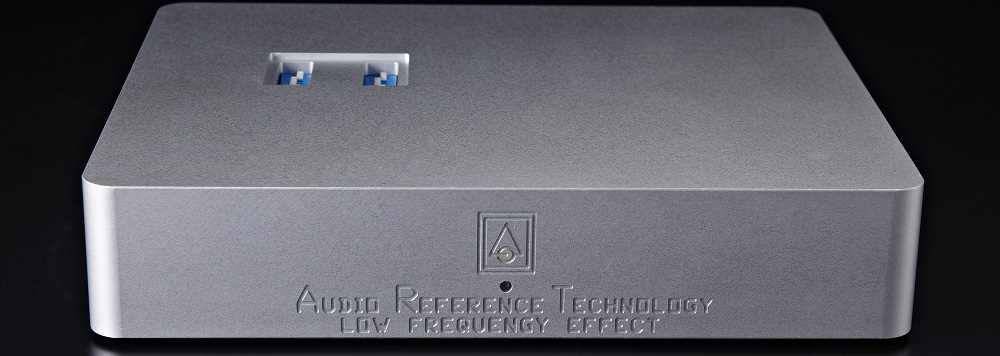
ART 低頻音效裝置 RCA
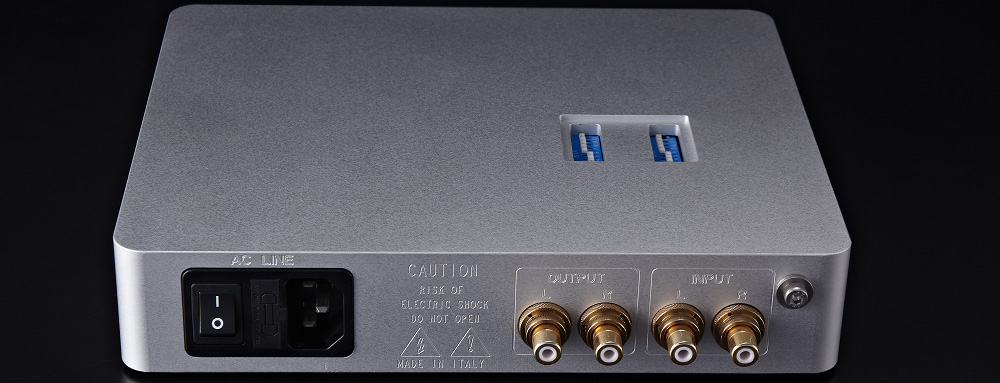
此篇文章於 2015-11-13 09:13 AM 被 Leo Yeh 編輯。
-
-
 Audio Reference Technology Room Tuning Cones and L.F.E. Audio Reference Technology Room Tuning Cones and L.F.E.
Audio Reference Technology Room Tuning Cones and L.F.E.
By: Jack Roberts | October 2015
http://www.dagogo.com/audio-referenc...ones-and-l-f-e
Audio Reference Technology (A.R.T.) was founded by Luigi Basagni in 1983 in Firenze, Italy. According to Basagni, realizing that there were myriad external factors that interfere with the transmission of audio signals, their main purpose was to pursue a way to get “the real sound” from audio systems. A.R.T. is not a big company, with only 12 employees, including 3 R&D engineers. Luigi Basagni, who is also the Chief Engineer, said in a Dagogo interview in 2013, “I think the main reason that A.R.T. can survive over 25 years . . . we can enhance the performance of audio systems to have the sound quality that it should. I called it “real.” “Make sound real” is what allows A.R.T. to flourish for over 25 years.”
While A.R.T. is perhaps best known for their cables, they also make a whole line of power products, a CD mat, a LP clamp, and room tuning accessories. This review is of their room-tuning devices. In that same interview Mr. Basagni said, “Our Tuning Cones are designed based on the theory that fixed vibration frequencies change the amplitude slope of the air, which consequently changes the voice we hear. These Tuning Cones are able to bring out low to mid to high frequencies and enhance your soundstage, as well as dynamic.” I know that sounds like so much company hype, and is one of the reasons I had put this off for a while because to be honest, I was quite skeptical about these products.
Mr. David Huang of Audio Reference Technology came over to my house to tune my system, using their Metal and Wooden Tuning Cones. He also brought along one of the Low Frequency Effect units. While he was tuning my room, he kept talking about getting the system to produce “Real Sound,” a term I hear from some other Asian audiophiles.

ART Tuning Cones

ART Wooden Cones

ART Metal Cones
Mr. Huang started by asking me if there were any areas where I would like to see improvement. I told him the only thing I would like is more bloom in the lower midrange and bass, but I wasn’t willing to give up any of the PRaT or that magical alive sound in the midrange. Again, I wasn’t very optimistic that a few cones placed around the system could do this.
In a word, I became very impressed with Mr. Huang’s ability to know what the different cones would do for both the sound and the sound stage. It took him less than 20 minutes for me to go from skeptic to thinking there was a chance there might be something to this. Then, he begin to ask me how close was he to the sound I wanted, if the bass was better, if the midrange was bright or recessed and even questions about image width and height. Each time I answered, he would pull out a different range of cones and make small changes. By the time he had finished, about 90 minutes later, I was a believer. Of course, I couldn’t wait to try tuning it myself. I listened for a couple of days before I changed anything, and I was no dummy though: I took pictures of where Mr. Huang had placed the various cones.
The Metal Tuning Cones look like equipment spikes, but they aren’t. They, and the two different colored wooden cones,namely the Light and Dark Wooden Tuning Cones, are all tuned to specific frequencies. The company provides, in the instructions, the frequency for each different sized cone, which allows one to be pretty specific in tuning the system. So, after two days I started moving the cones and adding more cones. When I added too many of the wooden cones the mid and upper bass became muddy; conversely, when I removed all the wooden cones the same area sounded thinner. Changes like these were possible throughout the mid-range and top-end. I have found these very valuable in tuning my system to sound more like “Real Music.” They seem to be able to add harmonics to the sound of my system. As I have said, you can overdo it but with some careful listening I was able to get my system to sound more like real music than I ever have before.
For years, I have felt it was a mistake to have removed the balance and tone controls from preamps. I will not own a preamp without a balance control, but have given up on getting a world-class linestage with tone controls. Audio Reference Technology’s Tuning Cones are the best tone controls I have used. They are so much more than the old tone controls on preamps and better than any full range equalizer I have used. The A.R.T. allow you to add just the right amount of harmonics and musical presentation without compromising the transparency or clarity of your system.
That last statement is very important. The longer I have lived with these tuning cones in my system, the more convinced I am that they improve the harmonics of the sound of my system to a rather significant degree. Acoustic string instruments have much better harmonics and texture. The sound is simply fuller of beautiful tones.
As impressed as I am with what can be done with the cones, I am equally excited about the LFE box. I’ve always wished I could get the same bloom in the bass registers of my Teresonic Ingenium speakers that I get in the mid-range. I have tried several sub woofers over the years and have never found one that didn’t sound incoherent when mated with the speed of the Teresonic Ingeniums. The A.R.T Low-Frequency Effect unit was able to achieve this without any of the negative effects of subs and to my hearing, without any loss in transparency.

ART Low Frequency Effect XLR

Yes, it is an active device and while the people from A.R.T. don’t want to call it an equalizer, I don’t know what else to call it. On their website they say, “Most audio equipment operates below its optimum, with regard to bandwidth and tone quality, which is truly a great loss to the consumers. Even with some excellent stereo systems with frequencies that extend into the low 20Hz range, one cannot hear the bass properly because of echo, the length of the sound wave, or because the power amplifier can’t control the bass on its own.
A.R.T. Low Frequency Effect is designed to solve all these problems. You will not only experience fantastic low frequency, but the whole bandwidth will be amazingly open and wide. The roundness and the purity of the tenor, the clarity and profoundness of the bass, and the three-dimensional compass are so lovely; you will never want to be without it again.”
I don’t know what to say about those two paragraphs, but I know I love what it does for the sound of my system. As I write this, I’m sitting here listening to Cat Stevens’ live concert recording. I went to this concert in the ‘70s and I can tell you this is the closest I have ever come to the dynamics and emotional experience of that night. I need to say the LFE doesn’t give my speakers the ability to plummet the depths of a sub. What it does do though, is give me a more natural bloom in the upper bass and more power in the 30 to 50-hertz regions. By the way, if you are worried about using an equalizer in your system, don’t forget that if you listen to vinyl, you already have an equalizer in your phono stage.
I know these products aren’t inexpensive, but they are worth every dime they cost! There are lots of room tuning devices out there. You can use the A.R.T. products in combinations with others if you wish, but you may not need to. One of the things I really like is that all of the turning cones go around or between the speakers; not all over the room. If your system is nearly where you want it, I highly recommend these. I simply am amazed at what they did for my musical enjoyment!

ART LFE RCA

-
-
-
-

傳說中的旁門左道.江湖術士.難以理解.但是它卻能以它的優勢及條件取而代之.將擴散板(R.G.B)拿下.燒友的結論.頻寬.細緻.動態完全發揮.最重點是再大的動態都不會有駐波.好玩吧?


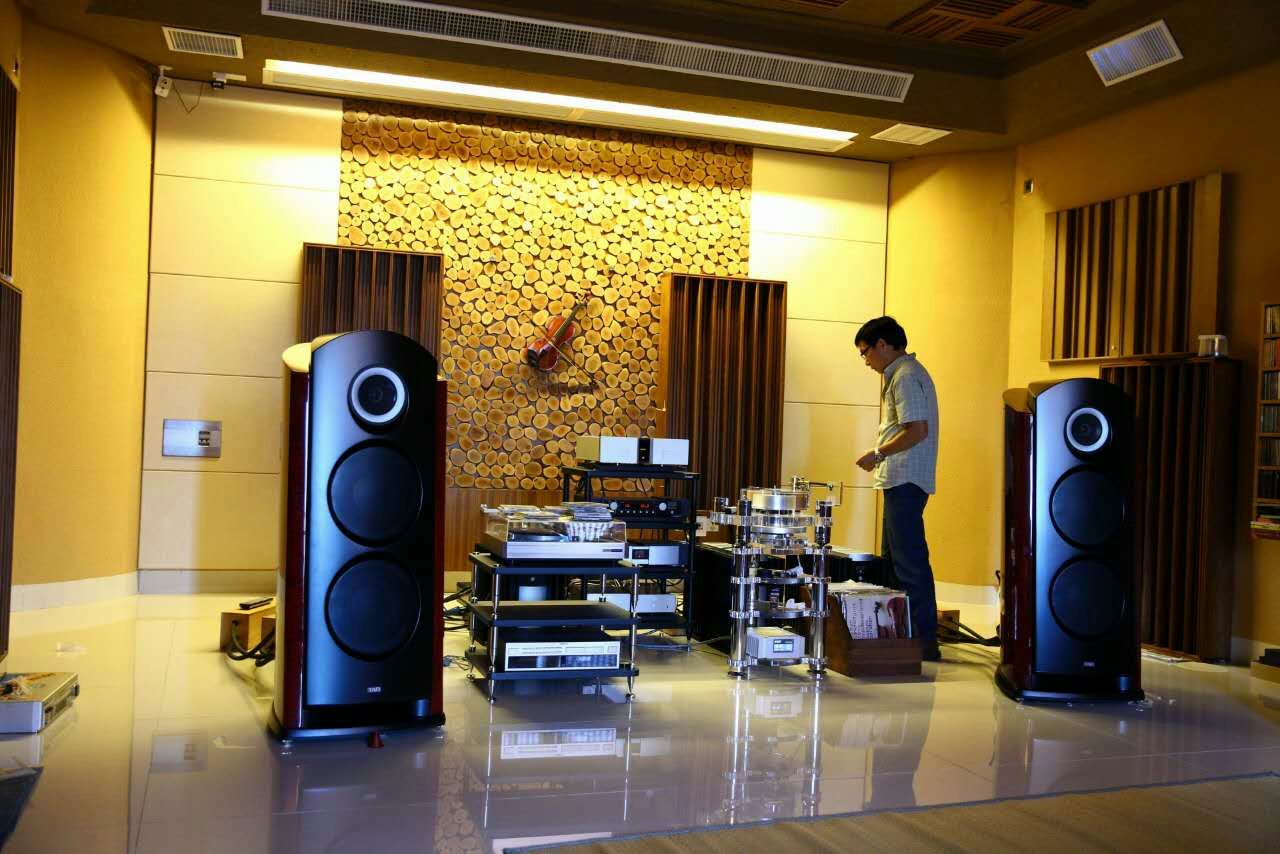
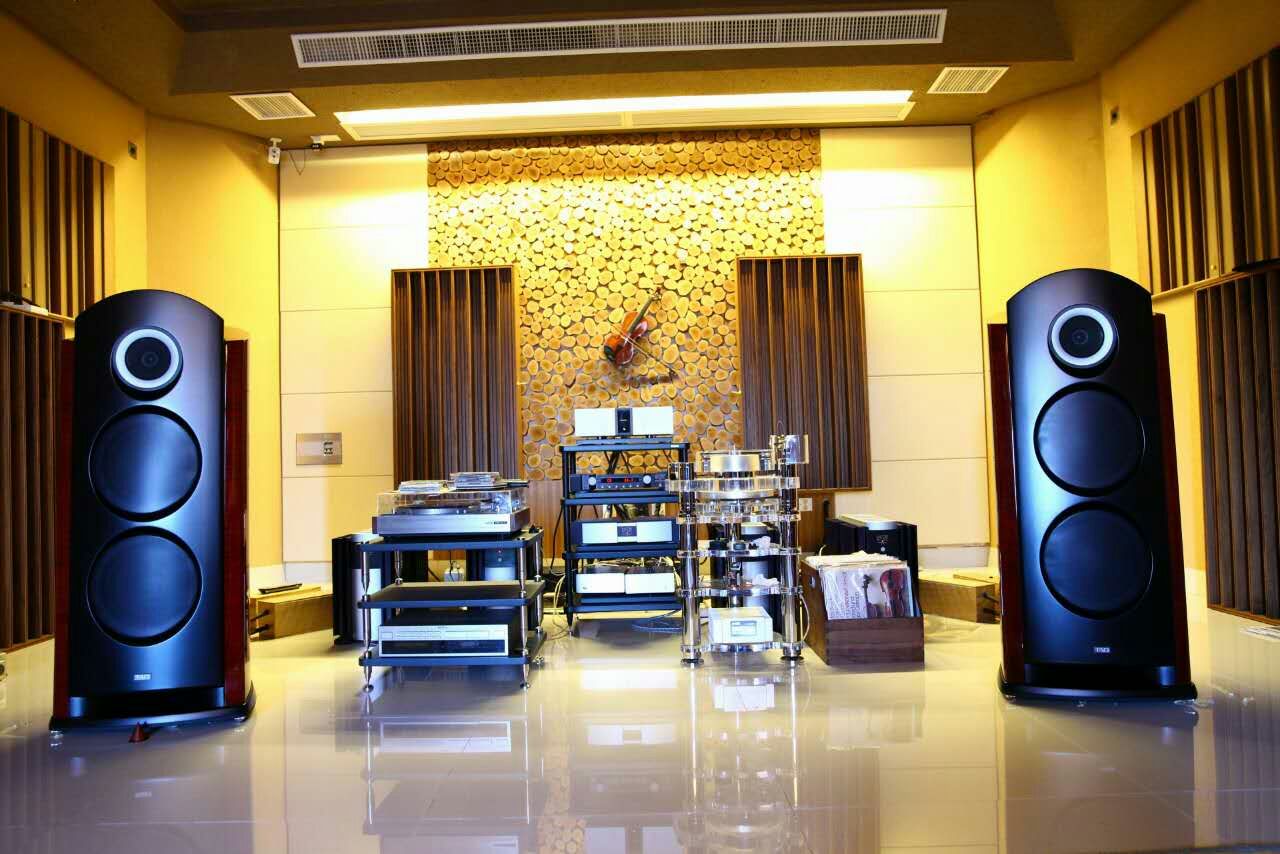
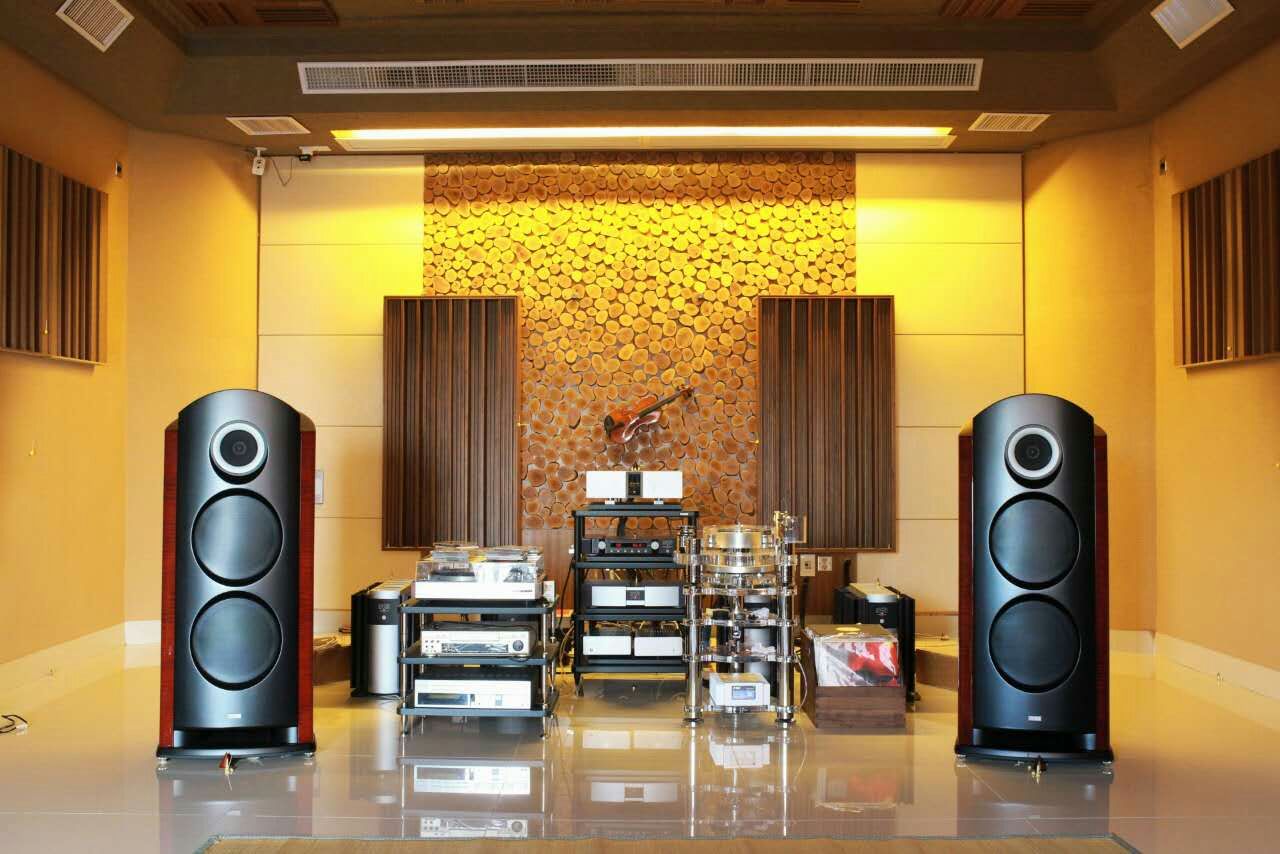
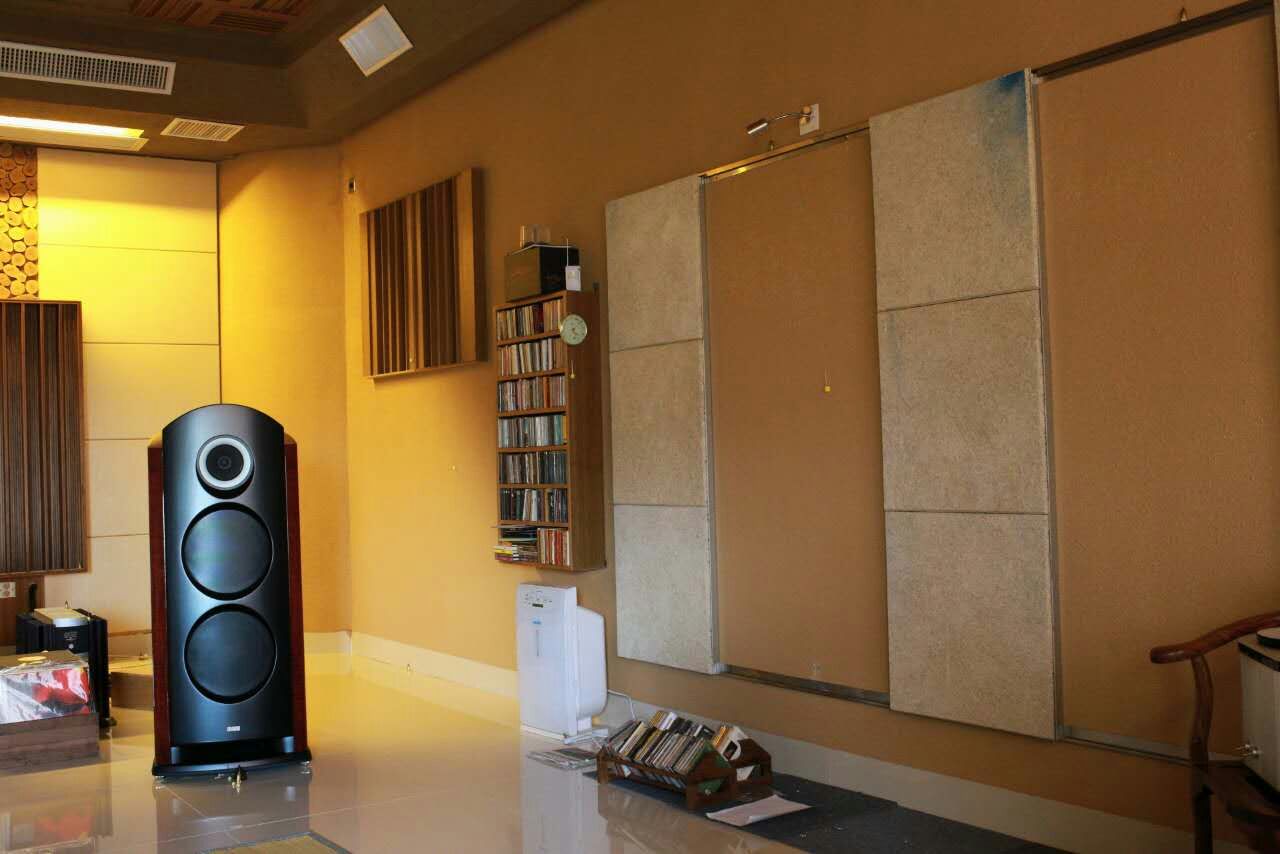
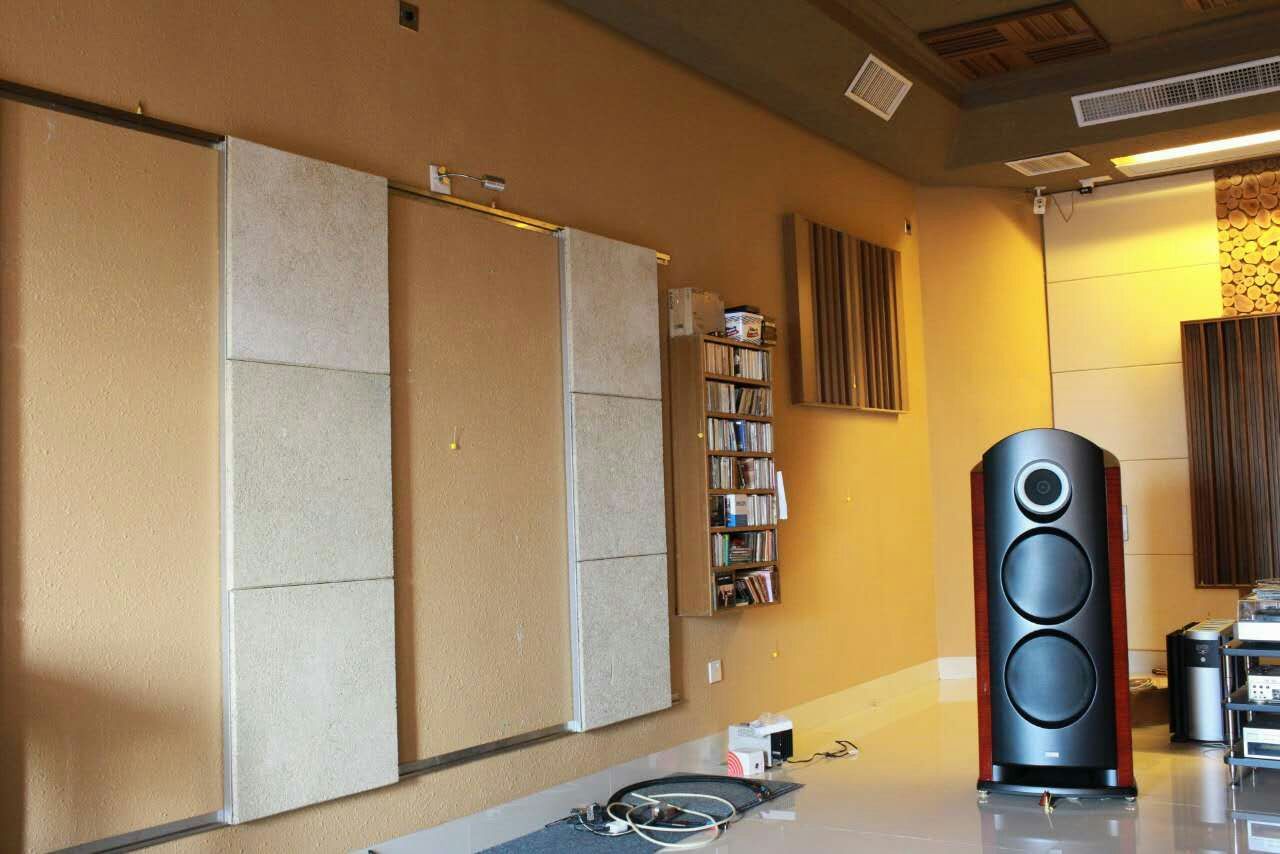
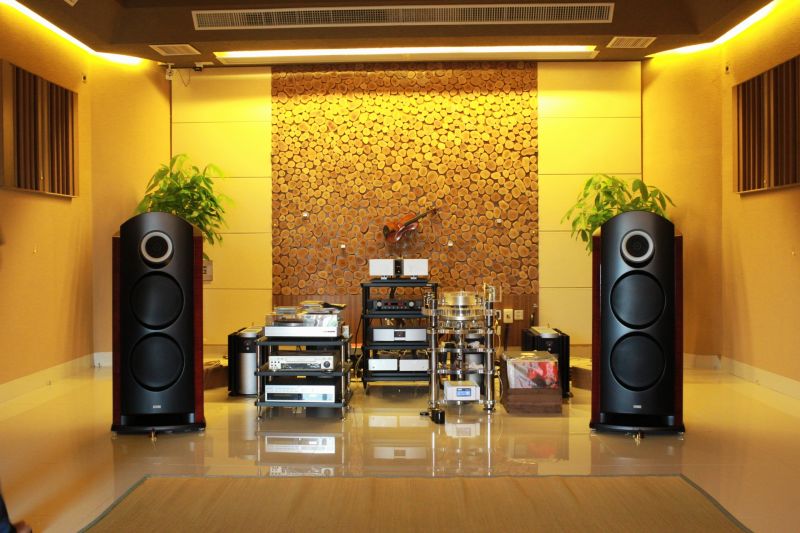
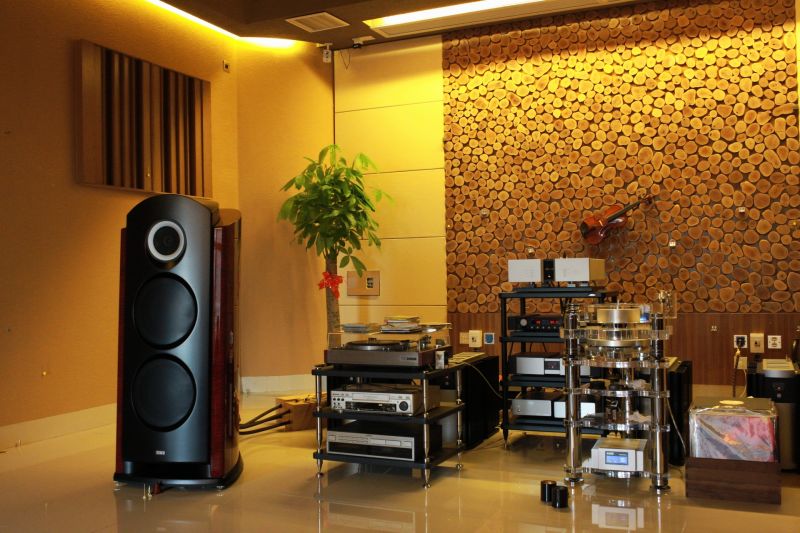
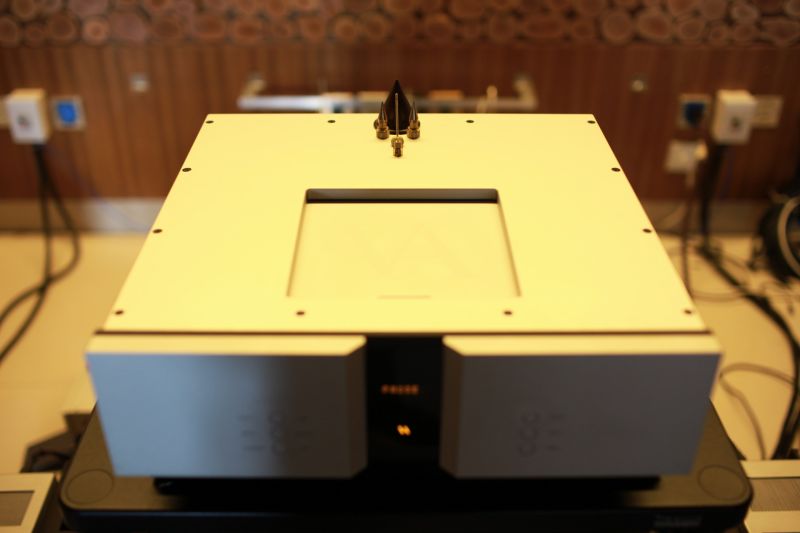
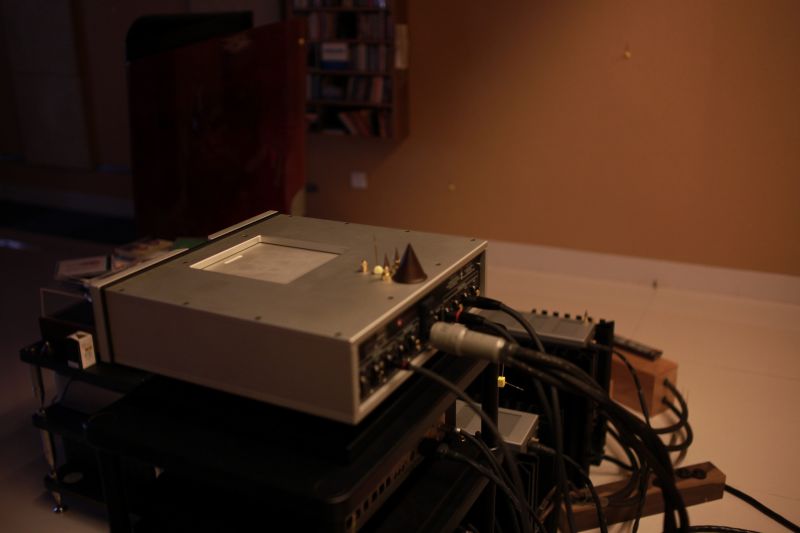
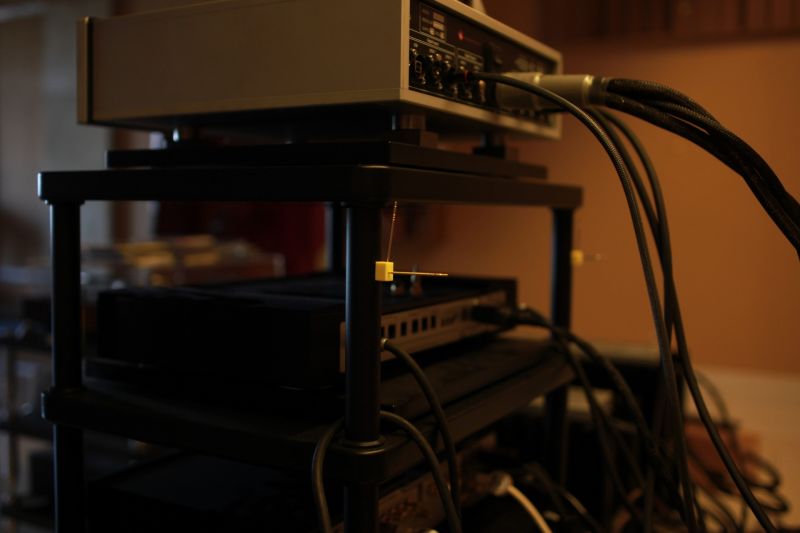
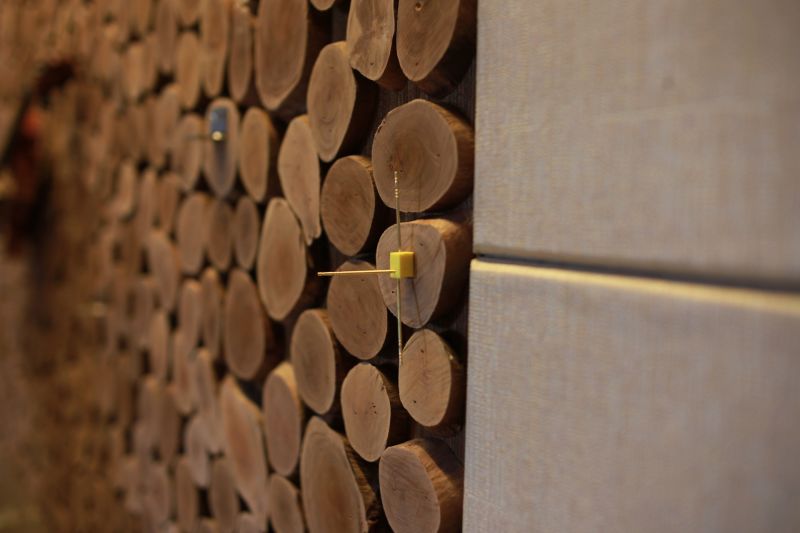
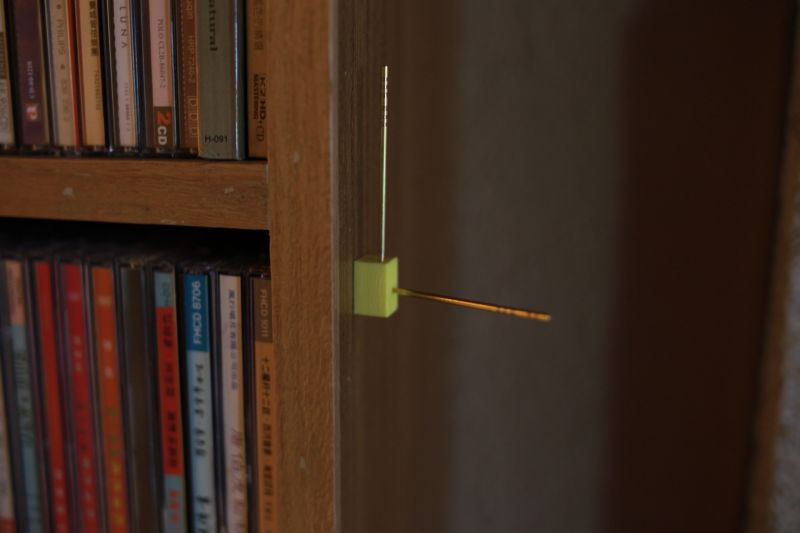
-
-

学习了,一个角锥可以改变那么多。
通过我的 HUAWEI MT7-TL10 上的 Tapatalk发言
-
The Following User Says Thank You to wenzw For This Useful Post:
 發文規則
發文規則
- 您不可以發表新主題
- 您不可以發表回覆
- 您不可以上傳附件
- 您不可以編輯自己的文章
-
討論區規則
|
